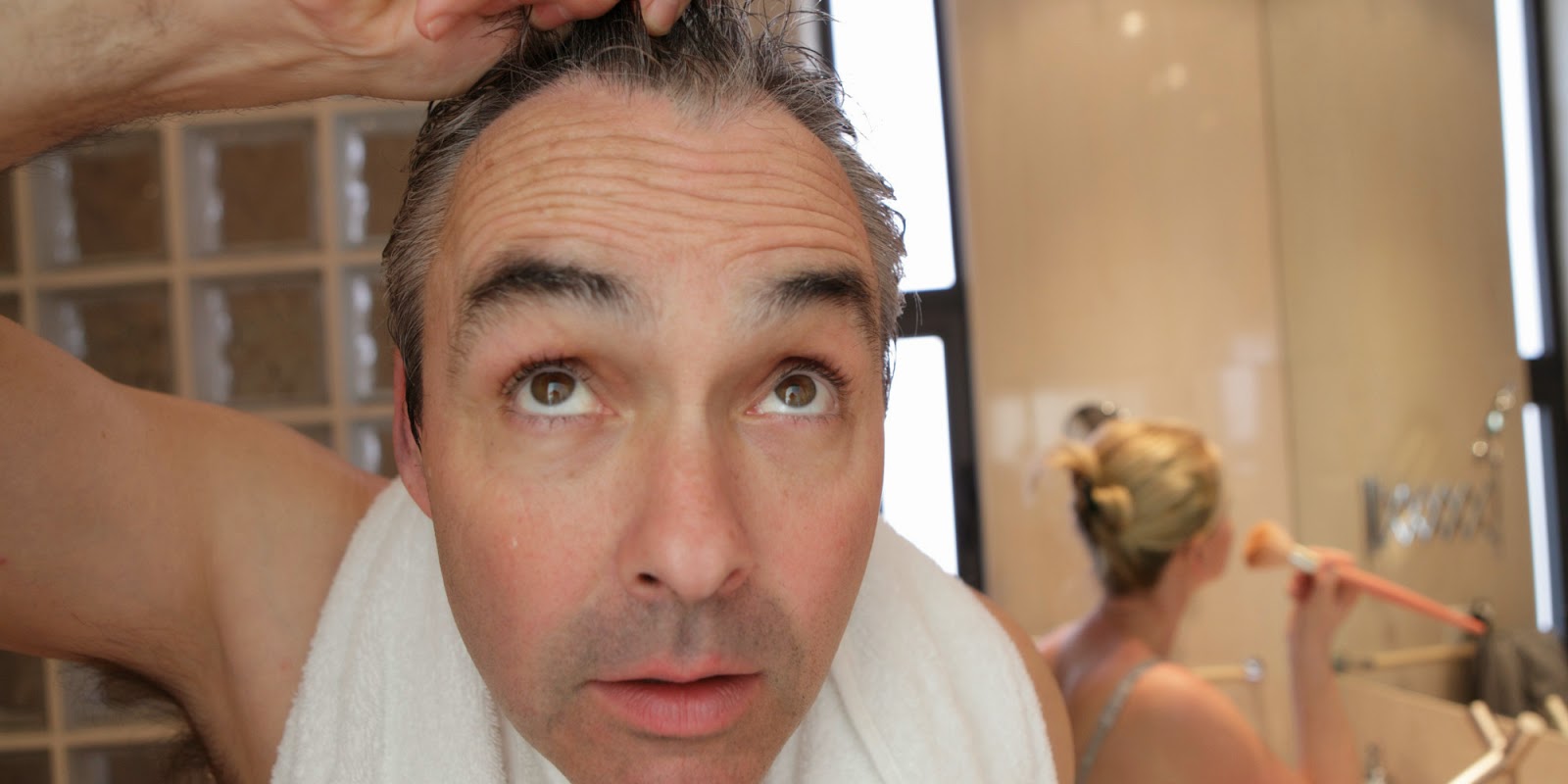Male pattern
baldness affects over half of men to some extent over the age of 50 and most
men at some stage in their lives. Most affected men do not wish to have any
treatment. If required, treatment can usually prevent further hair loss and
often cause hair regrowth.
Male pattern
baldness is the common type of hair loss that develops in most men at some
stage. The condition is sometimes called androgenetic alopecia. It usually
takes 15-25 years to go bald. However, some men go bald in fewer than five years.
Typically, at
first the hair begins to thin (recede) at the sides (temples). At the same
time, the hair usually becomes thin on the top of the head. A bald patch
gradually develops in the middle of the scalp. The receding sides and the bald
patch on the top (the crown) gradually enlarge and join together, leaving a
patch at the front. The patch at the front eventually thins as well.
A rim of hair
is often left around the back and sides of the scalp. In some men, this rim of
hair also thins and goes to leave a completely bald scalp.
Who gets male
pattern baldness?
Nearly all
men have some baldness by the time they are in their 60s. However, the age the
hair loss starts is variable. About three in ten 30 year-olds and half of 50
year-olds are quite bald. Some women also develop a similar type of hair loss,
mainly at the crown. Baldness in women is much more common after the menopause.
About 13 in a 100 women have some baldness before the menopause, rising to 75
in a 100 over the age of 65.
What causes male
pattern baldness?
Hair is made
in hair follicles which are like tiny pouches just under the skin surface. A
hair normally grows from each follicle for about three years. It is then shed
and a new hair grows from the follicle. This cycle of hair growth, shedding and
new growth goes on throughout life. The following is thought to occur in men as
they gradually become bald:
Affected hair
follicles on the scalp gradually become smaller than normal.
As the
follicle shrinks, each new hair is thinner than the previous one.
Before
falling out, each new hair grows for much less time than the normal three years
or so.
Eventually,
all that remains is a much smaller hair follicle and a thin stump of hair that
does not grow out to the skin surface.
Male hormones
are involved in causing these changes. The level of the main male hormone,
testosterone, is normal in men with baldness. Hair follicles convert
testosterone into another hormone called dihydrotestosterone. For reasons that
are not clear, affected hair follicles become more sensitive to
dihydrotestosterone, which causes the hair follicles to shrink. It is also not
clear why different hair follicles are affected at different times to make the
balding process gradual.
The condition
is hereditary (genetic); the location of the gene was identified in 2008.
It is also
not clear why only scalp hairs are affected and not other areas such as the
beard or armpits.
Are there any
complications from male pattern baldness?
Although male
pattern baldness is a common and harmless condition, it can be linked to
metabolic syndrome (the combination of obesity, diabetes, raised blood pressure
and raised choleterol), resulting in an increased risk of heart disease. This
link is most often seen in men who develop baldness at a relatively young age.
Women with
male pattern baldness should be checked for causes of raised male hormone
levels, such as polycystic ovary syndrome (a condition in which cysts develop
in the ovaries).

Hiç yorum yok:
Yorum Gönder